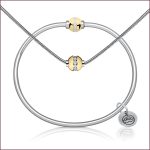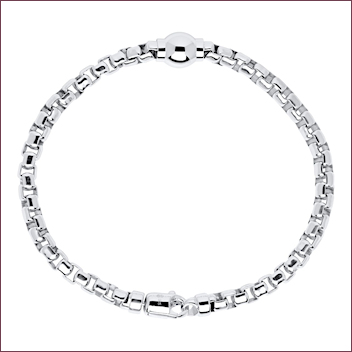The Retail Strategy Of Gifting
Gifting can be a powerful retailing strategy that builds customer loyalty and repeat business, not to mention enables retailers to reach two target consumer markets at one time, advocates Pam Danziger, president of Unity Marketing, Stevens, Pennsylvania, and author of “Shops That Pop”.
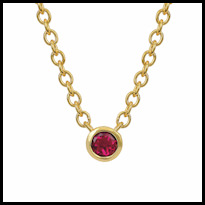 To say that gifting is important to retailers is an understatement, underscores Danziger. Throughout the year people celebrate holidays, occasions, life events and milestones by purchasing and giving gifts. She cites Christmas/winter holidays and birthdays the two biggest gifting occasions, followed by five other major gift giving holidays, leading with Valentine’s, Mother’s and Father’s days, then Easter/Passover and Halloween. But there are many other personal reasons to give gifts like weddings, anniversaries, new babies, and graduations.
To say that gifting is important to retailers is an understatement, underscores Danziger. Throughout the year people celebrate holidays, occasions, life events and milestones by purchasing and giving gifts. She cites Christmas/winter holidays and birthdays the two biggest gifting occasions, followed by five other major gift giving holidays, leading with Valentine’s, Mother’s and Father’s days, then Easter/Passover and Halloween. But there are many other personal reasons to give gifts like weddings, anniversaries, new babies, and graduations.
“Giving gifts is deeply embedded in our DNA,” Danziger says. “As social creatures, gift giving bonds people together and is used to show affection, appreciation and love for one another. The gift is a totem expression of deeper meaning and emotional significance.”
Unity Marketing estimates that $1 out of every $10 spent in the typical retail store, and now increasingly with online retailers is on a gift. That translates into about $128 billion spent on gifts in 2017.
Create a Gift Department
Danziger advocates retailers create a gift department, explaining that traditional store models arrange merchandise by type, rather than function. Typical shoppers, she explains, know what they’re looking for before they find it. But gift shoppers are often not sure what they are looking for, so the retailer can make that easier by creating a prominent area where great gift ideas are displayed.
A strong proponent of taking the guesswork out of gift giving, Ostbye offers retailers easy to sell, current mainstream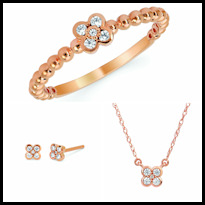 designs that appeal to a variety of age groups, with display presentations that promote bestsellers, says Theresa Namie, merchandise manager for the Minneapolis, Minnesota-based manufacturer. “Our focus is on helping companies brand themselves. Our retail sales tools include artwork, ad and billboard design ideas, online links for websites, trade-up programs for anniversary bands and diamond/Christian marriage symbol pendants, and merchandise exchange program.”
designs that appeal to a variety of age groups, with display presentations that promote bestsellers, says Theresa Namie, merchandise manager for the Minneapolis, Minnesota-based manufacturer. “Our focus is on helping companies brand themselves. Our retail sales tools include artwork, ad and billboard design ideas, online links for websites, trade-up programs for anniversary bands and diamond/Christian marriage symbol pendants, and merchandise exchange program.”
Jewelers who call out top gift ideas for a variety of occasions are positioning themselves as gift consultants. A conversation starter, merchandising and marketing in this way demonstrates that the jeweler understands the challenge of finding the perfect gift and has some solutions. Providing gift ideas helps to simplify the search and leave more time to talk to customers.
“One of the primary pain points for gift shoppers is feeling secure about making the right selection,” says Danziger. “Use storytelling to create a narrative for each gift. Add a card selection that speaks to the psychographics of the store’s clientele. Revitalize the lost art of gift-wrapping with creative packaging.”
Nathan Button, product manager for the display and packaging division at Rio Grande, a Richline brand in Albuquerque, New Mexico, advocates bows and ribbons as an inexpensive way to add wow. “Use your brand color on your base packaging and go wild with the bows and ribbons. Add heavy contrasting textures against clean packaging, or a vivid pop of sparkle or color.” He underscores that packaging and display are key elements in creating an experience for the gift giver and receiver. “Customized and meaningfully unique experiences resonate.”
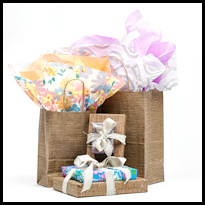 A game changer in jewelry presentation, says Button, is the incorporation of LED lights into fixtures for jewelry display. “Minimalist designs allow for portability without distraction from the product. The days of hiding product inside a showcase are ending. And lighting like this is making it happen quicker without sacrificing the wow factor. Customers are now able to physically interact with the wow, all the while not noticing the little clean fixtures enhancing it.”
A game changer in jewelry presentation, says Button, is the incorporation of LED lights into fixtures for jewelry display. “Minimalist designs allow for portability without distraction from the product. The days of hiding product inside a showcase are ending. And lighting like this is making it happen quicker without sacrificing the wow factor. Customers are now able to physically interact with the wow, all the while not noticing the little clean fixtures enhancing it.”
Celebrate the Gift Experience
Danziger references a new study on gifting, conducted at the Wharton School, University of Pennsylvania that finds that gifts of experience do more than material gifts to foster meaningful relationships between gift givers and receivers. So to meet the expectations of today’s experience economy, she advocates traditional retailers make their material gift offerings more of an experience to grow their share of the gifting market.
The study cited that the best material gifts are ones that incorporate an experiential aspect that make them more emotionally evocative. “When recipients of a material gift focus on the emotion they feel consuming the gift, they exhibit equally high improvements in their relationship as recipients of an experiential gift,” finds the study. “Select products that have an experiential hook or wow factor that makes them compelling for shoppers to pick up and touch, explore, play with and interact with in a personal way.”
In addition to in-store displays, Jennifer Phelps-Montgomery, designer for the New York City-based MWI Eloquence, advocates social media to promote what makes/how to give a good gift, with visual platforms like Instagram and Piniterest sharing ideas and nurturing the gifting experience. Popular with women under 40, these platforms are already engaging in these discussions.
The key to success in retail today is to not just be a place for people to buy things, but rather a destination for people 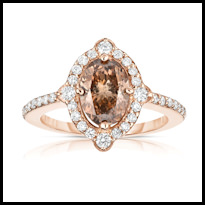 to have experiences, says Danziger. Buying and selecting a gift is an experience that challenges most people, yet it is important for them because the gift carries so much emotional weight. Making the store a destination for gift shoppers fills a real need. By creating a full-service gift department, retailers can make their store top on gift shoppers’ lists to go when they need a gift, which research indicates is every one to two months.
to have experiences, says Danziger. Buying and selecting a gift is an experience that challenges most people, yet it is important for them because the gift carries so much emotional weight. Making the store a destination for gift shoppers fills a real need. By creating a full-service gift department, retailers can make their store top on gift shoppers’ lists to go when they need a gift, which research indicates is every one to two months.

